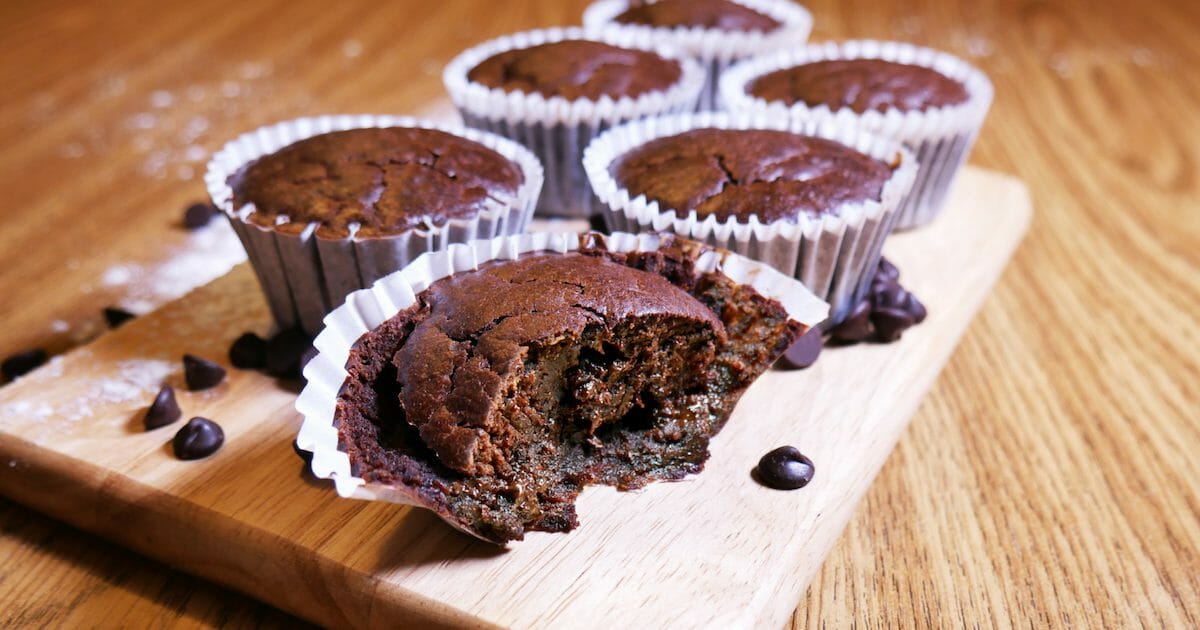Sorghum: Flour, Syrup, and How to Use!
Have you ever heard about the most recent superfood trend? Sorghum flour is anywhere right now and it could be a fantastic little addition to your present diet. Whether you’re going entirely gluten-free or just looking for ways you could cut down gluten, this alternative is simple to use and worth learning about.
As though which weren’t reason enough, you can even try incorporating sorghum syrup to recipes for that extra boost. So, without further ado, let’s take a look at the advantages of both of these ingredients and how to use them in your gluten-free cooking.
What is Sorghum, Anyway?
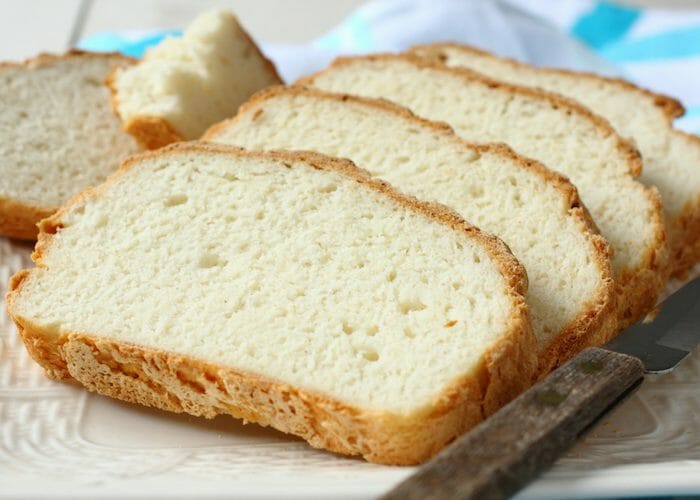
Let’s begin with the fundamentals. What’s sorghum? Despite not being widely known here in the united states, sorghum is one of the important grains in the world. These sorghum seed plants originated around 8000 years back in Egypt and individuals moved them to many distinct areas around the world, such as Ethiopia and Sudan. Flash-forward to the current day and the crop can be found around the world. From India to the Americas, now you can locate sorghum being grown in many major countries.
Even the sorghum plant, which can be a part of the Panicoideae family, is actually considered to be the”fifth most important cereal crop in the world”, according to the Whole Grains Council. Grain sorghum made that name as it’s a versatile crop, which can grow in some of the most extreme conditions.
Sorghum Flour vs. Sorghum Syrup
When you first start learning about the grain sorghum, you might wonder what forms it can take. The grain sorghum can be used as energy, animal feed, and alcohol. However, it’s time to consider two of the most common sorghum products currently on the market – sorghum flour and sorghum syrup. Here’s what you need to know:
Sorghum flour

Perhaps one of the most popular uses of grain sorghum is the creation of sorghum flour. The ingredient has been hailed as one of the best modern-day superfoods, not least because it is a gluten-free alternative to wheat flour. The nutritional value of this product speaks for itself. In an 100g size serving of sorghum flour, you get 8.4g protein along with helpings of calcium, copper, and iron too.[3]
All of the above means that including this ingredient in your diet could help you to give your body more of what it needs. It can also be used in some of the most nutritious sorghum recipes as a substitute for wheat flour. For that reason, you’re likely to find a load of sorghum recipes which include cakes, bread, and stew (in which it is often used as a thickener!).
Sorghum syrup
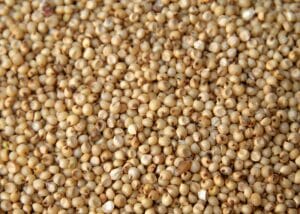
Another sorghum product that you may come across in health food stores is sorghum syrup. When the sorghum plant has been harvested from the fields, some manufacturers extract a bright green juice from it. This juice is cooked and thickened until it becomes an amber-colored syrup, which you can find in stores.
As a commercial product, you can use sorghum syrup as a substitute for honey or sweetener. You can use it in cake recipes, use it to sweeten drinks, and even put it on pancakes. Sorghum syrup contains high levels of potassium, magnesium, vitamin B6, and manganese.[4] One tablespoon serving of the syrup contains just 61 calories.
5 Benefits of Sorghum Flour and Syrup
Now that you understand the sorghum definition, let’s talk about why these ingredients are worth knowing about. The truth of the matter is that both sorghum flour and sorghum syrup can yield a whole range of health benefits. That’s why you really should include both of these superfoods in your diet. With that in mind, we should take a brief moment to look at some of the most compelling, science-backed advantages to these ingredients.
1. High in dietary fiber

Getting enough fiber in your diet is vital to your overall health. A report from Nutrition Australia suggests that eating the right amount of fiber could lower your cholesterol and improve your blood sugar levels. There is also evidence that it may prevent diseases such as diabetes, bowel cancer, and heart disease.[5] It is therefore recommended that men consume 30g fiber per day, and women consume 25g.
Why should you include some of the most popular sorghum recipes in your everyday diet? The obvious answer to this question is that the grain sorghum is packed full of fiber.[6] When you choose to eat this grain, you get a full wealth of nutrients. That’s due, in part, to the fact that you eat the entire grain – the outer layer and all. When you do so, you get extra fiber along with a whole range of key nutrients that nourish your body.
2. Ideal for celiac sufferers
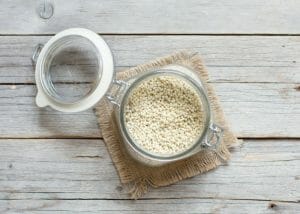
In recent years, we have become more and more aware of celiac disease. This autoimmune condition affects at least three million Americans, according to information from the University of Chicago.[7] Those who suffer from the disease have an intolerance to gluten, which is the protein found in wheat, rye, and barley. When they consume these ingredients, it causes their immune system to attack their small intestine. Should you suffer from the condition, you must maintain a gluten-free diet to manage it.
Luckily, the grain sorghum could be an ideal addition to a gluten-free meal plan. Research shows that consuming this grain (rather than wheat or barley) elicits no side effects in celiac patients.[8] That means that it is safe for sufferers to include this particular ingredient in their diet. There’s a variety of ways in which people can include the ingredient in their everyday diet. Eating bread made from sorghum flour, for example, is an easy swap to make that will keep celiac sufferers healthy.
3. Could improve circulation

Poor circulation can lead to a variety of health complaints including anemia, and is something that you want to avoid at all costs. With that in mind, changing your diet so that you might improve your circulation is a smart move when it comes to your general health. One of the more surprising sorghum flour and syrup benefits is that they may help to boost your blood circulation.
The grain sorghum actually contains high levels of both copper and iron.[9] These two key nutrients can help ensure that people have enough iron in their body. Copper helps with the absorption of iron, which means that problems such as an iron deficiency are far less likely. The more iron and copper you consume, the more your body produces red blood cells. That means that your circulation improves and so does your energy level.
4. High in antioxidants
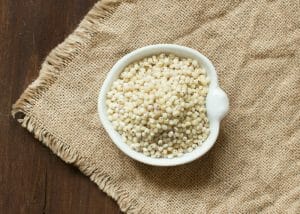
Research into the black grain sorghum variety found that the ingredient could have strikingly high antioxidant qualities. In fact, researchers suggested that the antioxidant levels contained in this grain were around three to four times higher than in the average whole grain.[10] That means that eating sorghum on a regular basis could significantly boost your intake of antioxidants.
They also compared the grain sorghum to fruits and vegetables and found that it had higher amounts of the pigment anthocyanin. Research has previously linked this pigment to lower arterial stiffness and central blood pressure in women.[11] These side effects mean that consuming food with anthocyanin in it could help to improve cardiovascular health.
What’s more, another study suggested that there is a link between the pigment and cancer-fighting properties.[12] The animal study looked at anthocyanin-rich extracts and how they affected tumorous cells. The results suggested that increasing the intake of these pigments could have beneficial results for fighting off tumors.
Antioxidants play a major role when it comes to fighting cancer. In the body, the antioxidants “interact with and neutralize” free radicals, which have the power to do damage to your cells.[13] In animal studies, increasing the intake of exogenous antioxidants from food has been shown to reduce free radical damage linked to cancer development.[14] Although more research is needed, there’s a theory that boosting antioxidant consumption may help to slow down cancer in humans.
5. Boosts your energy levels
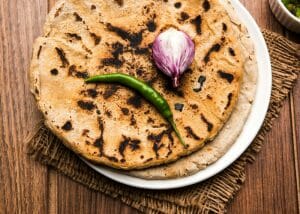
Do you feel a little sluggish towards the end of the day? You’re not alone. Maintaining peak energy levels can be difficult and your diet plays an important role in this aspect of your overall health. Rather than reaching for yet another cup of coffee, why not consider trying something new? Try adding sorghum flour to your diet.
Grain sorghum is high in something called niacin, which is also known vitamin B3.[15] This vitamin is responsible for metabolizing the various nutrients you consume throughout the day and turning them directly into energy.
The theory is that when you eat something that boasts large levels of niacin, such as grain sorghum, you could find that it gives you more energy. Including some variations of this grain in your day-to-day meals could make a huge difference to how you feel.
4 Ways to Include Sorghum Flour and Syrup in Your Diet
Are you ready to start using some sorghum flour and syrup in your food and drink? Before we take a look at some full sorghum recipes, it’s worth understanding that you can use these products in a wide range of culinary pursuits. Here are four ways in which you can start using the ingredients in your diet right away:
1. Add sorghum syrup to drinks

If you usually use a standard sweetener for your drinks, such as sugar or coffee sweetener, it could be time to change your ways. Sorghum syrup is an ideal option for those who are looking to lead a healthy lifestyle. Start off by putting a drop or two in your tea or coffee. Be sure to do the “taste test” as you go so that you get the quantities right.
2. Thicken up your stew or soup

When winter comes, many of us love nothing more than making nourishing soups and stews to warm us up. If you’re a fan of these recipes, why not mix them up and use some sorghum flour in them? One of the great things about this ingredient is that it can be used as a thickener for many standard recipes. If your sauce is looking a little thin, add a couple tablespoons of sorghum flour and mix well.
3. Replace wheat flour with sorghum flour

One of the most direct ways in which you can add sorghum flour to your recipes is to use it as a substitute. When a standard recipe calls for wheat flour or any other mainstream flour product, simply replace it with some sorghum flour instead. This gluten-free alternative is highly accessible and works as a great substitute.
Be aware that you may need to change the proportions you use slightly depending on the recipe. It may be a case of trial and error when you first start out. Soon enough, though, you will learn that it’s strikingly simple to make this small change to your much-loved recipes.
4. Use sorghum syrup on desserts

Whether you’re enjoying some pancakes or waffles, there’s no better way to sweeten things up than using some sorghum syrup on them. Drizzle this ingredient over your favorite dessert and enjoy the wonderfully sweet flavor! You can use this syrup much like you would any other sweet sauce. For example, if you would usually use maple syrup or honey on a certain recipe, just swap it for sorghum syrup instead.
Try These 4 Gluten-Free Sorghum Recipes
Making your meals gluten-free is as easy as including sorghum flour in some of the most popular recipes. Whether you fancy some bread, pancakes, a smoothie, or cupcakes, we’ve got you covered. Let’s take a look at some of the most tempting sorghum recipes out there. Here are just four examples of how you might use both the syrup and the flour as part of your recipe collections. Try them for yourself!
1. Sorghum Flour Cocoa Cupcakes
Fancy a treat? Let’s face it, there are few people in the world who can say no to a deliciously freshly baked cupcake.
If you have a sweet-tooth, you might find it hard to find gluten-free options out there. Why not try making your own? Using sorghum flour in place of regular flour means that you can create a cake recipe that everyone can enjoy. Here’s what you need to know.
Prep Time: 20 minutes | Cook Time: 15 minutes | Serves: 6 | Calories Per Serving: 217 kcal
Equipment: Muffin baking tray, cupcake liners, standing mixer, large bowl, whisk, large wooden spoon
Ingredients
- 1/2 cup sorghum flour
- 1/4 cup tapioca flour
- 1 tsp baking powder
- 1/4 cup cocoa powder
- 1 tsp sorghum syrup
- 1 cup coconut milk
- 1/4 cup vegetable oil
- 2 tsp vanilla extract
- 1 cup chocolate chips
Directions
- Preheat the oven to 350°F. Prepare your muffin baking tray by lining each cup with cupcake liners.
- Put the sorghum flour, tapioca flour, cocoa powder, and baking powder in the standing mixer and mix well.
- Put the vegetable oil, coconut milk, sorghum syrup, and vanilla extract in a large bowl. Whisk the contents together until you have a smooth, silky finish.
- Keep the standing mixer on a low and slow setting. Gently pour the wet mixture onto the dry flour mixture. Wait a few minutes for the two mixtures to combine.
- Stop the standing mixer. Add the chocolate chips to the mixture and use a large wooden spoon to fold them into the cake mix. Make sure that they are evenly distributed.
- Separate the mixture into six cupcake liners and try to keep it as even as possible. Put the muffin baking tray into the oven.
- Bake for around 15-20 minutes, checking the cupcakes frequently. Take the tray out of the oven and leave to cool before eating!
2. Sweet Sorghum Syrup Smoothie
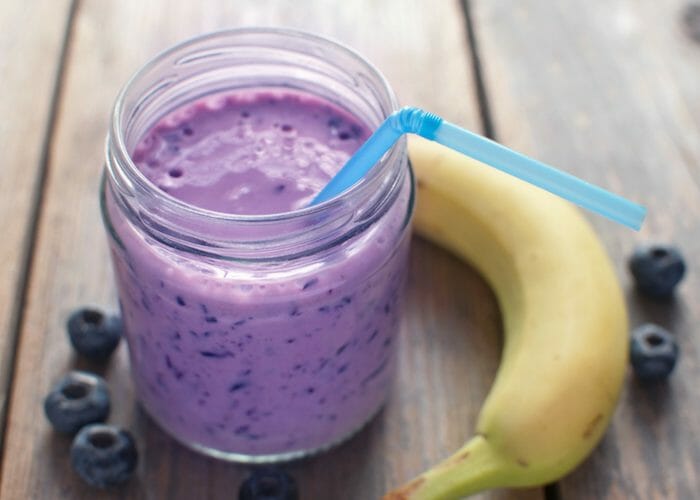
Looking for the perfect start to the day? Well, you might just have found it. One of the most exciting sorghum recipes right now has absolutely nothing to do with sorghum flour. Instead, this smoothie is all about using the syrup as a natural sweetener. Adding it to a morning smoothie means that you will get that sweet taste you crave without the huge calorie count. Here’s one recipe to try for yourself.
Make Time: 10 minutes | Serves: 2 | Calories Per Serving: 89 kcal
Equipment: Blender/smoothie maker, chopping board, large knife
Ingredients
- ½ cup of almond milk
- 1 medium banana
- ¾ cup of frozen blueberries
- ½ cup of frozen strawberries
- 1 tsp of sorghum syrup
- 2 tsp of chia seeds
Directions
- Peel and chop the banana into small chunks.
- Add all of the ingredients to a blender or smoothie maker. Turn the machine on and blitz the ingredients for around 30 to 60 seconds.
- If the smoothie appears too thick, add some water to the mixture to thin it out.
- Serve in a tall glass over some ice cubes for a refreshing and nutrition-packed drink.
Extra options!
When you’re making a superfood smoothie, it’s important that you work with what you have! If you don’t have any frozen blueberries or strawberries, for example, you can switch them out for other fruits.
Equally, if you’re not a huge fan of almond milk, there are other plant-based options you can use. From soy milk to coconut milk, you can take your pick when it comes to creating this smoothie. Keep in mind, though, that the milk you choose may affect the taste so you might need to add more syrup to balance it out.
3. Sorghum Flour Bread

Whether you’re suffering from celiac disease or simply trying out a grain-free diet, one of the food products that you’re likely to miss the most has to be bread. Never fear! You don’t have to do without this snack. You can make your own sorghum flour bread at home with little to no trouble. The entire recipe will take you almost two hours to complete but the mouth-wateringly good finished loaf will be worth the time and effort.
Prep Time: 50 minutes | Cook Time: 50 minutes | Serves: 10 | Calories Per Serving: 230 kcal
Equipment: Small, medium and large bowl, whisk, large wooden spoon, bread tin
Ingredients
- 3 cups of sorghum flour
- ⅓ cup of tapioca flour
- 3 tsp of active dry yeast
- 2 tsp of honey
- 1 cup of cornstarch
- 4 medium eggs
- 1 tsp of xanthan gum
- Warm water
Directions
- Start by mixing the yeast and honey together in a medium bowl. Add a little warm water as you go to get a smooth consistency. Leave the mixture in a warm place for around five minutes. You should notice some air bubbles start to form.
- Combine the sorghum flour, tapioca flour, cornstarch, and xanthan gum in a large bowl. Whisk the mixture to ensure that it is all as even as possible.
- Crack the eggs into a small bowl and whisk them well.
- Pour the eggs and yeast mixture into the bowl where you have the flour. Mix the entire bread mixture with a large wooden spoon. The finished product should be wet and doughy.
- Grease the inside of the bread tin. Pour the mixture into the tin, ensuring that there is space for the loaf to expand.
- Leave the tin (with the dough inside it) in a warm, dry place for around 40 minutes. When you retrieve the dough, it should have doubled in size.
- Preheat the oven to 350°F. Put the bread tin in the oven to bake for around 50 minutes or until golden. Leave to cool and enjoy!
Extra options!
As with most sorghum recipes, you can customize this one as you please. If you’d like to jazz the bread up a little, it couldn’t be easier. Why not add a handful of mixed seeds to the bread mixture before you bake it? Alternately, you could sprinkle some seeds on top of the loaf before you put it in the oven. Finally, if you’re feeling ultra-adventurous, you might want to add some currants or fruit to the bread to give it a sweet twist.
4. Oven-Bake Sorghum Flour Pancakes

Weekend mornings are all about pancakes! Whipping up a batch of fresh gluten-free pancakes from sorghum flour isn’t all that hard at all, but why stop there? Did you know that you can actually oven-bake a giant pancake? It’s true.
Making the mix follows pretty much the same process. However, when you’ve completed that step, you put the skillet directly into the oven, rather than heating it on the stove. Here’s one of the easiest sorghum recipes that you’re sure to fall in love with.
Prep Time: 10 minutes | Cook Time: 25-30 minutes | Serves: 4 | Calories Per Serving: 358 kcal
Equipment: Large oven-ready skillet, mixing bowl, small bowl, whisk, large wooden spoon
Ingredients
- ½ cup sorghum flour
- ½ cup sweet white rice flour
- 1 Tbsp sorghum syrup
- 3 large eggs
- 1 tsp vanilla extract
- 1 ¼ cups coconut milk
- Pinch of sea salt
- Vegetable oil
Directions
- Preheat the oven to 350°F. Grease the skillet with some vegetable oil to prevent the oven-baked pancake from sticking.
- In a large mixing bowl, combine the sorghum flour, rice flour, sorghum syrup, vanilla extract, and coconut milk. Make sure that the mixture is as smooth and lump-free as possible.
- Crack the eggs into a smaller bowl and whisk thoroughly. Add them to the main mixture and combine the two. The batter mixture should be thick yet smooth. Add a pinch of salt to taste.
- Put the skillet into the preheated oven for around five minutes. This will give the pan time to heat up so that it’s warm when the batter hits it.
- Pour the batter into the skillet and put it back in the oven. Bake for around 25-30 minutes. You should check the pancake as often as possible.
- Serve while warm with a choice of toppings!
Pro tip: Make sure that the batter does not separate before you cook it. When you’re working with sorghum flour, this is a genuine risk. To avoid the problem, be certain to give the batter a final whisk before pouring it into the hot skillet.
Extra options!
When you have made your gluten-free sorghum flour pancakes, it’s time to have a little fun. The final step is deciding what toppings you’d like to have on your dessert. You can add things like Greek yogurt, honey, and fresh fruit to the mix.
If you’d like something a little more savory, you might want to try cream cheese, for example. Consider a range of topping options for this sorghum flour recipe and figure out what works for you.
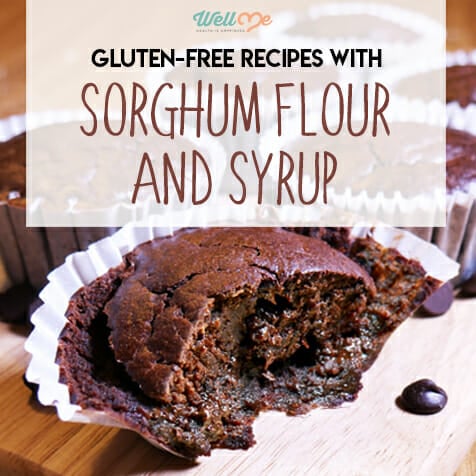
Conclusion
Now that you know all there is to know about both sorghum flour and sorghum syrup, what are you waiting for? As you can see here, you can use sorghum flour instead of the mainstream flour options. Here are some tips to keep in mind:
- Follow the recipes exactly and be careful with the measurements.
- When you know the basics, start adapting the sorghum recipes to suit you.
- Don’t panic if the sorghum flour doesn’t look exactly like regular flour.
- Experiment with various flavor combinations to suit you.
Why not start including some sorghum recipes in your day-to-day diet? When you have mastered the ones that we’ve included here, you should have a basic understanding of gluten-free cooking and how it works. The sooner you begin practicing, the easier it will be.


